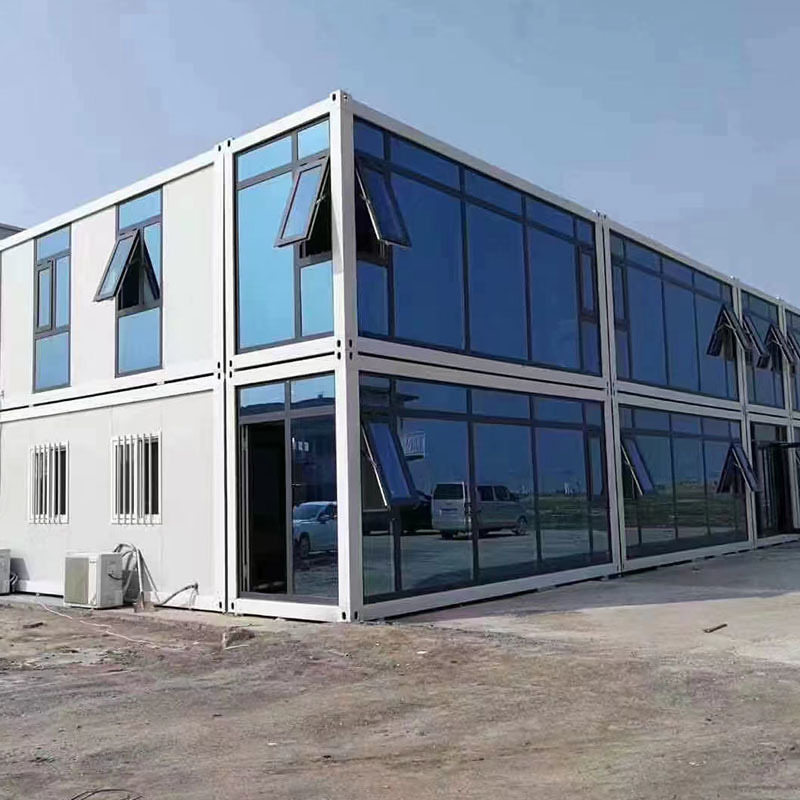Exploring the Benefits of Container Living: A Sustainable Housing Solution
Release Time:
Apr 10,2025
Container living refers to the practice of using repurposed shipping containers as residential or commercial spaces. This trend has gained popularity due to its affordability, sustainability, and versatility. By utilizing containers, builders can create a variety of living environments that cater to different needs and preferences while minimizing waste. One of the primary advantages of container
Container living refers to the practice of using repurposed shipping containers as residential or commercial spaces. This trend has gained popularity due to its affordability, sustainability, and versatility. By utilizing containers, builders can create a variety of living environments that cater to different needs and preferences while minimizing waste.
One of the primary advantages of container living is its environmental impact. Traditional construction methods often result in significant waste, whereas repurposing shipping containers helps reduce this issue. These containers are typically strong and durable, designed to withstand harsh conditions during transport. This resilience translates into buildings that are not only eco-friendly but also long-lasting. By repurposing materials, container living significantly lowers the carbon footprint associated with conventional construction practices.
Another noteworthy benefit is flexibility in design. Shipping containers can be easily modified and combined to create unique living spaces. Whether you envision a cozy single-container home or an expansive multi-container complex, the possibilities are virtually limitless. This adaptability makes container living an attractive option for various lifestyles, from minimalist dwellings to larger family homes.
Container living also promotes economic efficiency. As the demand for affordable housing rises, shipping containers offer a cost-effective solution without compromising quality. The relatively low cost of containers, when compared to traditional building materials, makes it easier for individuals and families to own their homes. Additionally, the speed of construction is another appealing factor. Building with containers can often be completed in a fraction of the time required for conventional homes, allowing people to move in sooner.
Moreover, container living fosters a sense of community and creativity. As this trend becomes more mainstream, developments centered around container homes are sprouting up, encouraging innovative design and collaboration among residents. These communities often emphasize shared spaces and sustainable practices, fostering connections and enhancing the overall living experience.
However, it is essential to consider local zoning laws and building codes when contemplating container living. Regulations may differ from one area to another, and ensuring compliance is vital before embarking on any construction project. Engaging with professionals who understand these regulations can help facilitate a smoother transition into container living.
In conclusion, container living represents a transformative approach to housing that blends sustainability, creativity, and economic efficiency. As the world continues to seek innovative solutions to housing challenges, embracing this modern concept might be the key to a more sustainable future. Whether you’re looking for a cozy retreat or a more substantial living space, container living offers a flexible alternative that aligns with contemporary values of environmental responsibility and community engagement.
One of the primary advantages of container living is its environmental impact. Traditional construction methods often result in significant waste, whereas repurposing shipping containers helps reduce this issue. These containers are typically strong and durable, designed to withstand harsh conditions during transport. This resilience translates into buildings that are not only eco-friendly but also long-lasting. By repurposing materials, container living significantly lowers the carbon footprint associated with conventional construction practices.
Another noteworthy benefit is flexibility in design. Shipping containers can be easily modified and combined to create unique living spaces. Whether you envision a cozy single-container home or an expansive multi-container complex, the possibilities are virtually limitless. This adaptability makes container living an attractive option for various lifestyles, from minimalist dwellings to larger family homes.
Container living also promotes economic efficiency. As the demand for affordable housing rises, shipping containers offer a cost-effective solution without compromising quality. The relatively low cost of containers, when compared to traditional building materials, makes it easier for individuals and families to own their homes. Additionally, the speed of construction is another appealing factor. Building with containers can often be completed in a fraction of the time required for conventional homes, allowing people to move in sooner.
Moreover, container living fosters a sense of community and creativity. As this trend becomes more mainstream, developments centered around container homes are sprouting up, encouraging innovative design and collaboration among residents. These communities often emphasize shared spaces and sustainable practices, fostering connections and enhancing the overall living experience.
However, it is essential to consider local zoning laws and building codes when contemplating container living. Regulations may differ from one area to another, and ensuring compliance is vital before embarking on any construction project. Engaging with professionals who understand these regulations can help facilitate a smoother transition into container living.
In conclusion, container living represents a transformative approach to housing that blends sustainability, creativity, and economic efficiency. As the world continues to seek innovative solutions to housing challenges, embracing this modern concept might be the key to a more sustainable future. Whether you’re looking for a cozy retreat or a more substantial living space, container living offers a flexible alternative that aligns with contemporary values of environmental responsibility and community engagement.
Key words:
What Else Might You Learn?











